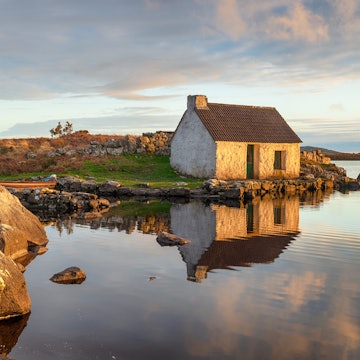
A scenic Welsh road trip: five days in Snowdonia & Anglesey

Jun 20, 2025 • 12 min read
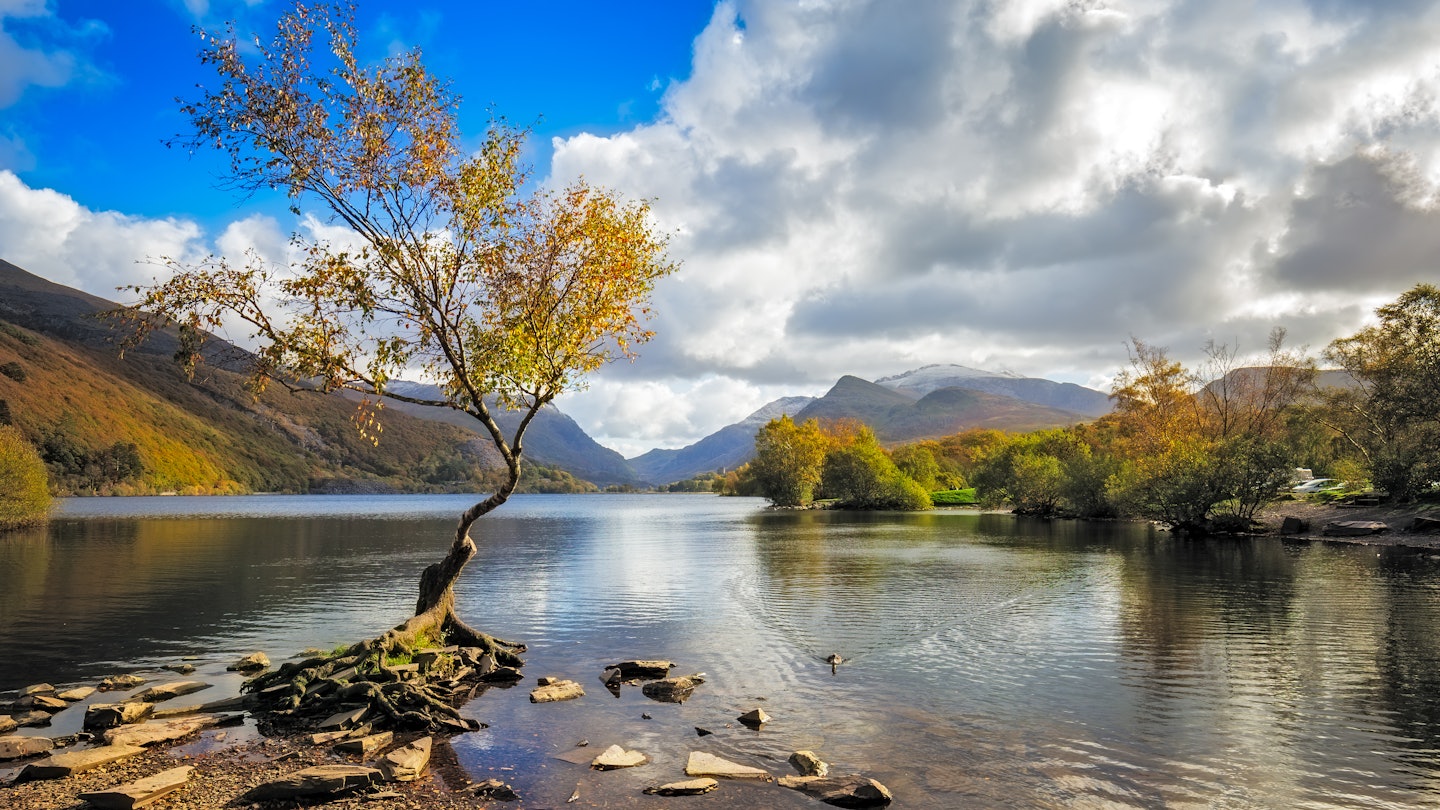
Dramatic vistas await on this five-day drive around Snowdonia (Eryri) and Anglesey. Lukasz Pajor/Shutterstock
If we had to pick one place to sum up the natural drama of Wales (Cymru to Welsh speakers), it would have to be Snowdonia, or Eryri, to use its Welsh name. As the focus of Snowdonia National Park (Parc Cenedlaethol Eryri), the 1085m (3560ft) summit of Yr Wyddfa (Mt Snowdon) is the anchor for a drive around some of Wales’ most dramatic landscapes, finishing up on the shores of its most famous island, Anglesey.
On the way, there’ll be time for hikes along soaring ridges, trips to locations from Arthurian legends, rambles around medieval castles, encounters with Welsh wildlife, hearty dinners of local Welsh produce and adventure activities galore.
If you’re ready for an adventure in Wales’ high country, hit the highway on this five-day driving itinerary around Eryri and Anglesey.
When to arrive
This drive will take you through classic walking country, so it’s best to come when the weather is favorable for enjoying the great outdoors. The best time to visit is from April to October, with the best weather of all (and the biggest crowds) from June to August.
Either side of this window, the crowds thin out, but there’s a greater chance of rain. By way of compensation, the spring months from April to May bring wild flowers (and daffodils), while the fall months from September to October fill the valleys with autumn foliage.
Crossing the mountains of North Wales in winter is a more serious undertaking – be ready for icy roads, snow on higher ground, and fog, which can make driving a challenge in this mountainous landscape.

How to get around
While buses and trains connect the main stops on this itinerary, exploring by car will let you add in interesting detours between the tourist hubs. If you’re relying on public transport, trains from Crewe can get you to Llandudno, where buses and trains run to Betws-y-Coed and Blaenau Ffestiniog, or Bangor, and on to Llanberis.
Within Snowdonia (Eryri), the Sherpa’r Wyddfa bus service is a convenient way of travelling between key villages and trailheads. From the end point of the itinerary in Holyhead, car ferries offer the chance to continue the adventure in neighboring Ireland.
What to pack
At any time of year, bring layers for cooler weather and waterproofs in case of showers. The summer months can be warm enough for wild swimming on Irish Sea beaches and in glacial mountain lakes, but for safety, bring a swimming buddy, as well as your swimming costume.
If you plan to go walking, bring comfortable walking boots or shoes with good grip and a windproof and rainproof layer. A quality walking map (Ordnance Survey OS Explorer maps cover the national park at 1:25,000 scale) and a compass are also worthy additions to your pack. In winter, bring serious cold-weather gear for any outdoor activities.
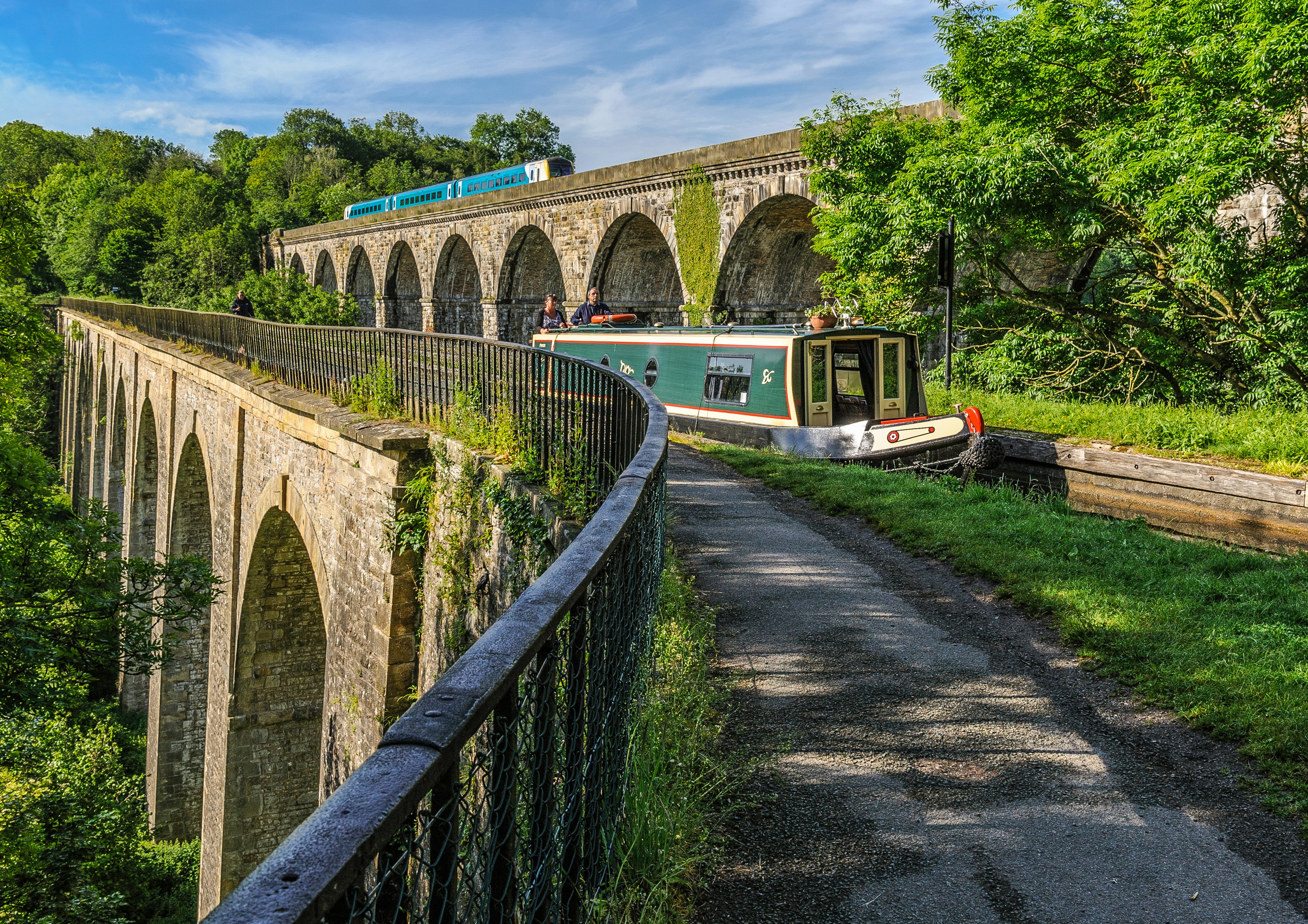
Day 1: Head from Crewe to Llangollen
Go from Crewe to Llangollen: The English town of Crewe is an easy gateway to North Wales by rail or road. If you’re driving, follow the A534 to Wrexham, then the A483 to Chirk, then the A5 along the Dee Valley.
How to spend the day: Start your journey into Wales at the town of Wrexham – once a busy center for lead and coal mining, the town was propelled to global stardom in 2020, when Deadpool actor Ryan Reynolds bought a share of the city’s beleaguered football team, Wrexham AFC, along with TV star Rob McElhenney.
With some advance planning, and a bit of luck, you may be able to secure tickets for a Wrexham home game and join local fans and devotees of the Welcome to Wrexham documentary – plus potentially Ryan and Rob – cheering on the team. Book a behind-the-scenes tour at the world’s oldest international football stadium if you can’t make a match.
Trade celebrity for history as you follow the A483 south from Wrexham to Chirk, where you can start a journey along the Llangollen Canal – a historic waterway that once moved people, goods and raw materials between Wales and England to service the Industrial Revolution.
Completed in 1801 by William Jessop and Thomas Telford, the impressive Chirk Aqueduct carries the canal 21m (69ft) above the River Ceiriog across ten masonry arches. Along the tow path, you can venture into the Chirk Tunnel, a 421m-long (1381ft) canal tunnel, just about wide enough for a single narrowboat.
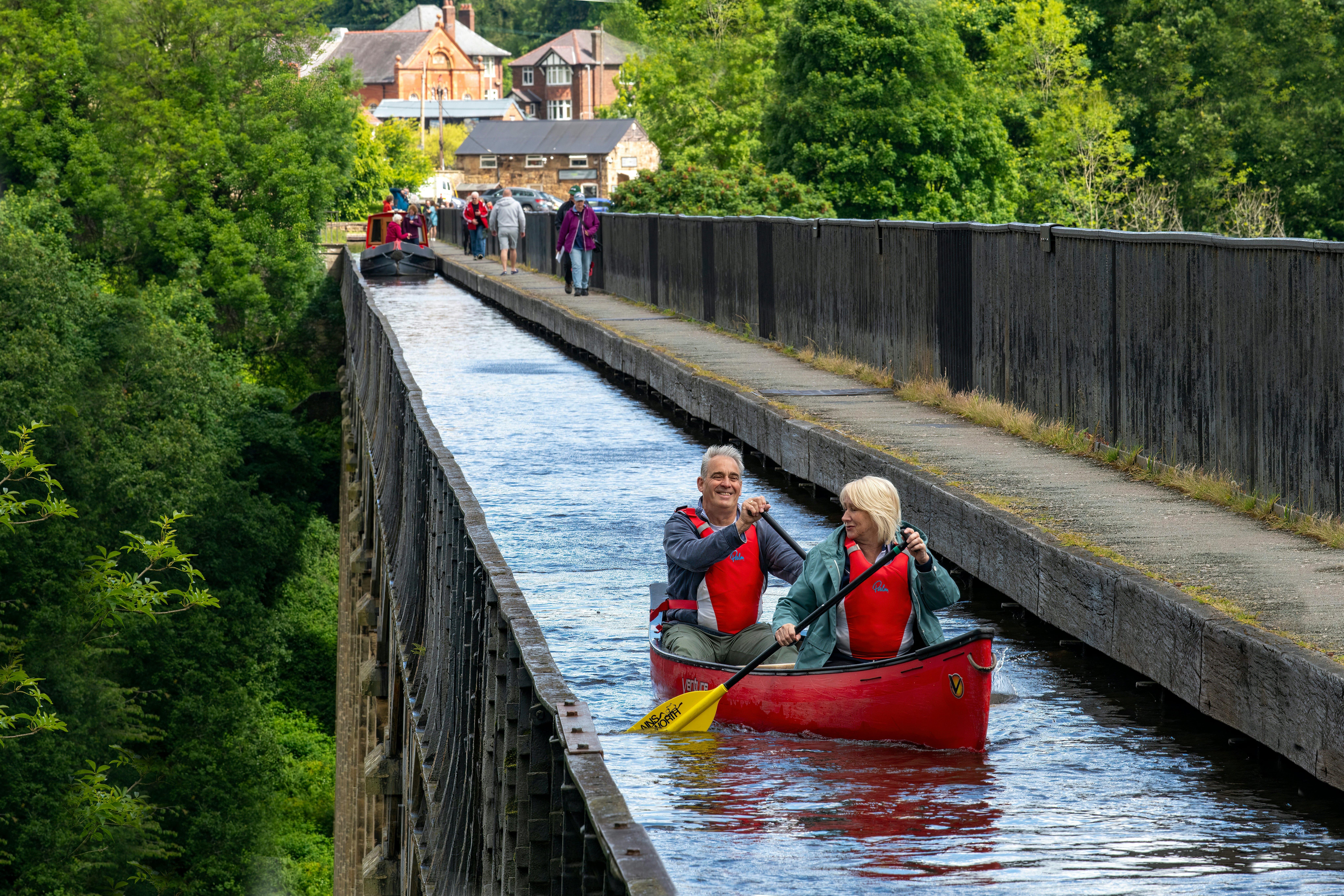
From Chirk, follow the A5 into the Dee Valley for a chance to paddle across the UNESCO-listed Pontcysyllte Aqueduct, Llangollen’s “stream in the sky.” Built between 1795 and 1805 by Telford and Jessop, this 18-arched, 307m-long (1007ft) marvel carries the Llangollen Canal over the River Dee in an iron trough balanced 38m (125ft) above the valley floor.
Bearded Men Adventures or Ty Nant Outdoors in Llangollen town can get you into a canoe or kayak to cross the longest and highest aqueduct in Britain. It's the canoe trip of your dreams, so long as you don’t look down…
If there’s still time, consider a ride on the heritage Llangollen Railway, a revived line that first started running in the 1860s, or join the Bearded Men for a whitewater rafting trip on the River Dee, tipping over Horseshoe Falls, a beautiful semicircular weir designed by Thomas Telford.
Evening: You’re in Wales now, so do as locals do and drop into the Corn Mill pub in Llangollen, set in a historic stone mill on the riverside, for a hearty Welsh meal washed down with local ales.
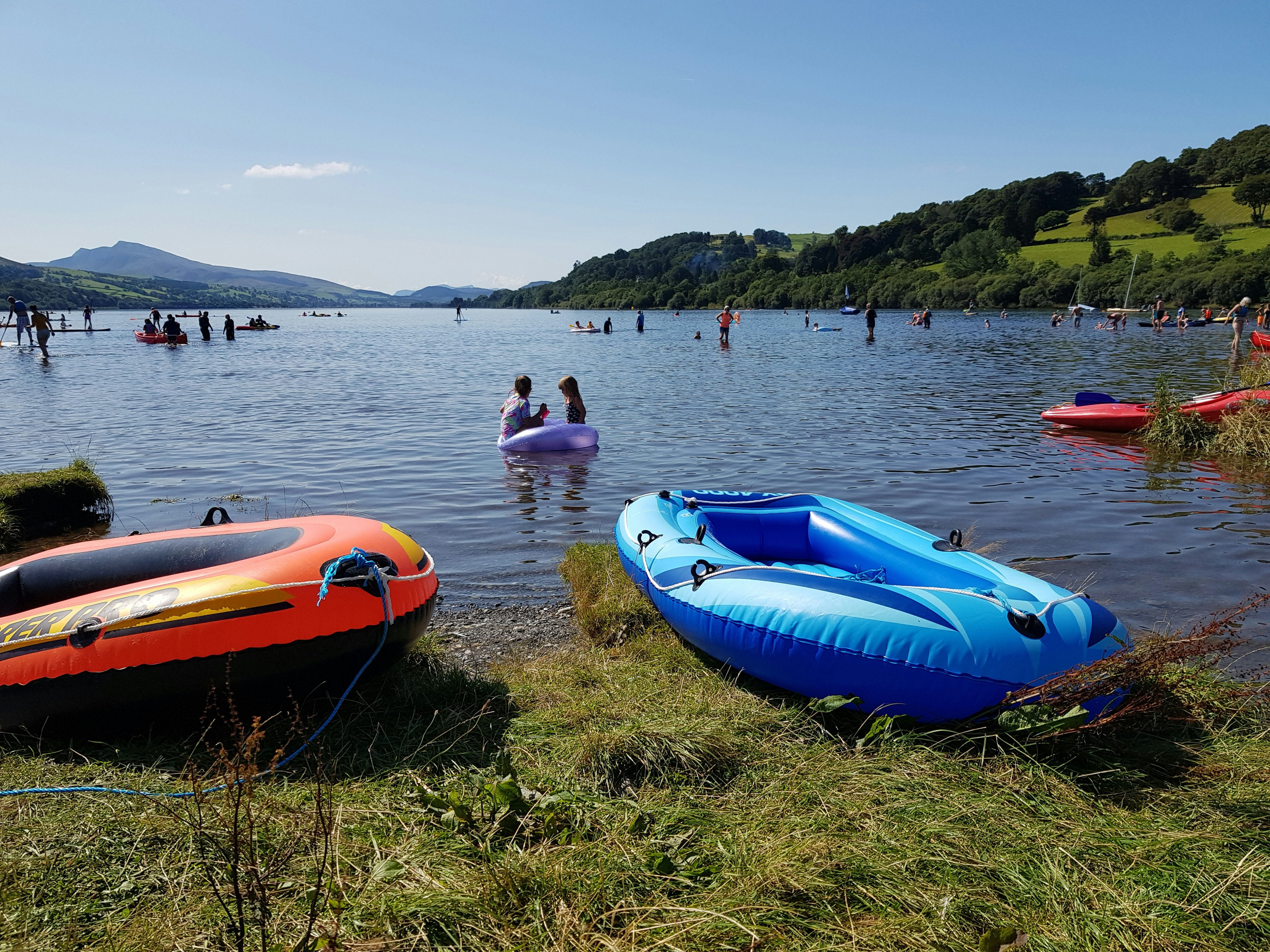
Day 2: Drive into grand landscapes in Snowdonia National Park (Parc Cenedlaethol Eryri)
Go to Blaneau Ffestiniog: Leave Llangollen on the A5, then follow the A494 and A470 to weave through the rugged highlands of Snowdonia National Park (Parc Cenedlaethol Eryri).
How to spend the day: Start a day packed full of adventures by driving southwest along the A5 then the A494 to reach Llyn Tegid (Bala Lake), the largest natural lake in Wales, stretching for 4 miles (6.4km) along a scenic, hill-flanked valley.
This glacial beauty takes its name from the cruel Prince Tegid Foel, who was drowned along with his kingdom when the valley flooded, according to the Mabinogion – a 6th-century work of Welsh prose. Today, the legend-filled lake is popular for wild swimming and paddling in summer; canoes, kayaks, SUP boards and boats can be hired from the Bala Adventure & Watersports Centre.
Green, hilly landscapes lead the way onward to Dolgellau near the coast. At the southwest end of Llyn Tegid, detour off the A494 at Llanuwchllyn along the Bwlch y Groes – the highest surfaced road in Wales – which will lift you high above the landscape as it crests a 545m (1788ft) ridge en route to Dinas Mawddwy.
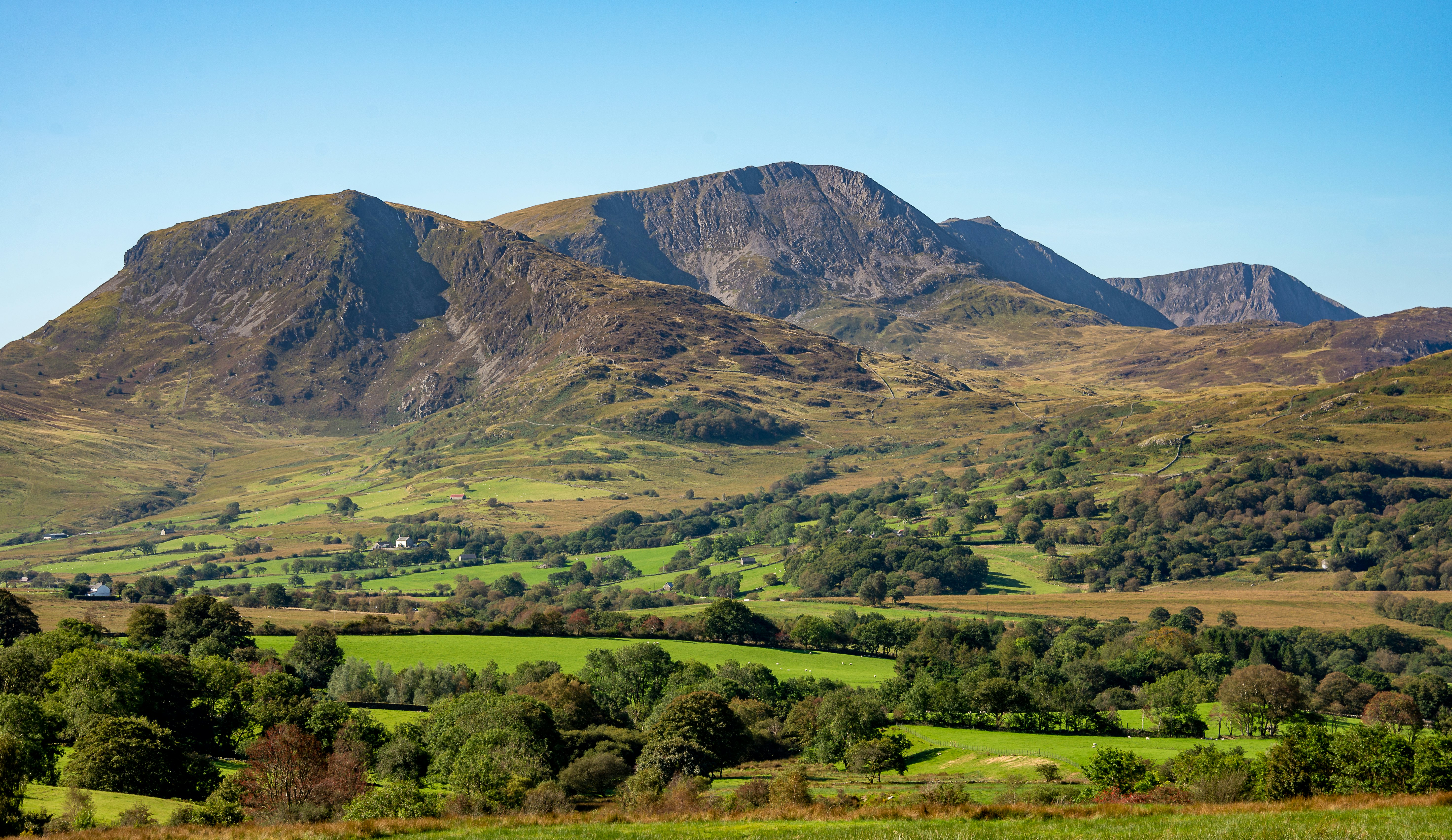
Consider a hiking detour from Dolgellau to Penygadair, the summit of 893m (2930ft) Cader Idris. This rounded peak is wrapped around a glacial basin containing the scenic lake of Llyn Cau – said to have been used as an armchair by a local giant. Pick up the 6.2-mile (10km) Pony Path from the Tŷ Nant car park just southwest of Dolgellau.
Next, follow the A470 north through landscapes that get increasingly dramatic as you punch through the southern section of the national park toward Coed y Brenin Forest Park. This is Wales’ holy grail for mountain biking, offering an epic playground of forested trails for all levels of experience.
Take your pick from eight dedicated trails, ranging from the relaxed MinoTaur trail (good for beginners) to the challenging black-graded Tarw Du (for veteran bikers only). Finish up the day by driving north through rousing mountain scenery to Blaenau Ffestiniog.
Evening: Have dinner in the village of Llan Ffestiniog at the community-owned Y Pengwern pub, then head over to Y Manod in Blaenau Ffestiniog, another community-run drinking hole with real ales, ciders and live music.

Day 3: Enjoy thrills and spills around Betws-y-Coed
Go to Llanberis: It’s a short driving day, following the A470, A5 and A4086, with lots of adventure activities to enjoy around Blaenau Ffestiniog and Betws-y-Coed.
How to spend the day: Make the most of a morning in Blaenau Ffestiniog. Spilling across the town’s former slate mines, Zip World Llechwedd offers a high-adrenaline adventure. Daredevils can strap into a four-person parallel zipline that will zip you and your buddies across the quarry at speeds of over 60mph (97km/h). Another key attraction here is the appropriately named Bounce Below – an enormous underground trampoline park housed in a disused mine cavern twice the size of St Paul’s Cathedral.
If you like to get your kicks on two wheels, grab lunch in Blaenau Ffestiniog, then hit the Antur Stiniog Bike Park on the north side of town, which offers 14 thrilling, gravity-fed trails, rated from green to black. Bike hire and an uphill bike transfer service are available on site.
Alternatively, continue the journey northeast to pretty Betws-y-Coed, worth a stop for its alpine vibe. Sitting snugly at the confluence of the Afon Llugwy and the Afon Conwy, surrounded by hills and ancient woodlands, it could have been plucked from a Welsh fairy tale.

Get a taste of the scenery at the nearby Gwydir Forest Park, where a series of peaceful walking trails lead through the trees and up to pretty lakes in the hills. The 2-mile (3.2km) trail to the Swallow Falls on the north side of Betws – the highest continuous falls in Wales – is another rewarding stroll.
With kids in tow, the Zip World Fforest park offers plenty of adrenaline-filled activities to keep the whole family buzzing. Soar through the treeline on a zipline safari, ride the luge-like forest coaster, or try a hair-raising tandem drop.
Then there’s the famous Plas y Brenin center, set in the gorgeous Dyffryn Mymbyr Valley. With the Snowdon Horseshoe rising in the distance, this is the go-to spot for anyone looking to learn the ropes (literally and figuratively) of outdoor climbing, whitewater kayaking, off-road mountain biking and other in-nature thrills.
All being well, it will still be light as you make the drive to Llanberis, following the A5 and the tiny, winding A4086 over the Pen-y-Pass between glacier-sculpted peaks – including fang-like Tryfan and angular Glyder Fawr on one side, and mighty Yr Wyddfa (Mt Snowdon) on the other.
Evening: Llanberis is a tiny village, but there’s comfortable accommodation at the YHA Snowdon Llanferis hostel and the garden-ringed, peak-side Royal Victoria Hotel, and tasty grub at The Heights pub or the Peak Restaurant.

Day 4: Climb Yr Wyddfa (Mt Snowdon)
Go to Caernarfon: You’ll spend the day hiking the slopes of Wales’ highest mountain, so the next night’s stop is nearby at Caernarfon, just off the A487 on the shores of the Menai Strait.
How to spend the day: You’ll want to get an early start to reach the slopes of 1085m (3560ft) Yy Wyddfa (Mt Snowdon) – the highest mountain in Wales – before the crowds arrive, particularly in summer. There are six trails leading to the top, all strenuous but highly rewarding.
For a direct start from Llanberis, the 9-mile (14.5km) Llanberis Path makes a fairly gradual ascent following the route of the Snowdon Mountain Railway. It's a steady climb of three to four hours, with eye-popping views that stretch as far as Ireland and the Isle of Man on a clear day.
Got more energy in the tank? An alternative route begins back at Pen-y-Pass, where you can climb to the top of Yr Wyddfa via the 8-mile (13km) Miners’ Track – passing the remains of the former Britannia Copper Mine – or the shorter but steeper, 7-mile (11km) Pyg Track.

Whichever route you follow, you’ll be greeted at the top by views across a landscape that seems crafted for giants. Indeed, Yr Wyddfa is said to be the spot where King Arthur defeated the giant Rhudda Gawr, creating the cairn known as Gwyddfa Rhudda that gives the peak its Welsh name.
Legends aside, the climb up Yr Wyddfa is tough – for a gentler ascent, consider the ride on the heritage Snowdon Mountain Railway from Llanberis as a low-effort alternative. Check if the National Slate Museum in Llanberis has reopened following its 2025 redevelopment, before you head west to Caernarfon for the night.
Evening: Caernarfon is a good spot to sample upscale Welsh cooking, with local Welsh lamb, beef and seafood featuring prominently on the tasting menus at Sheeps & Leeks. Afterward, grab a drink overlooking the Menai Strait at the cozy Anglesey Arms.
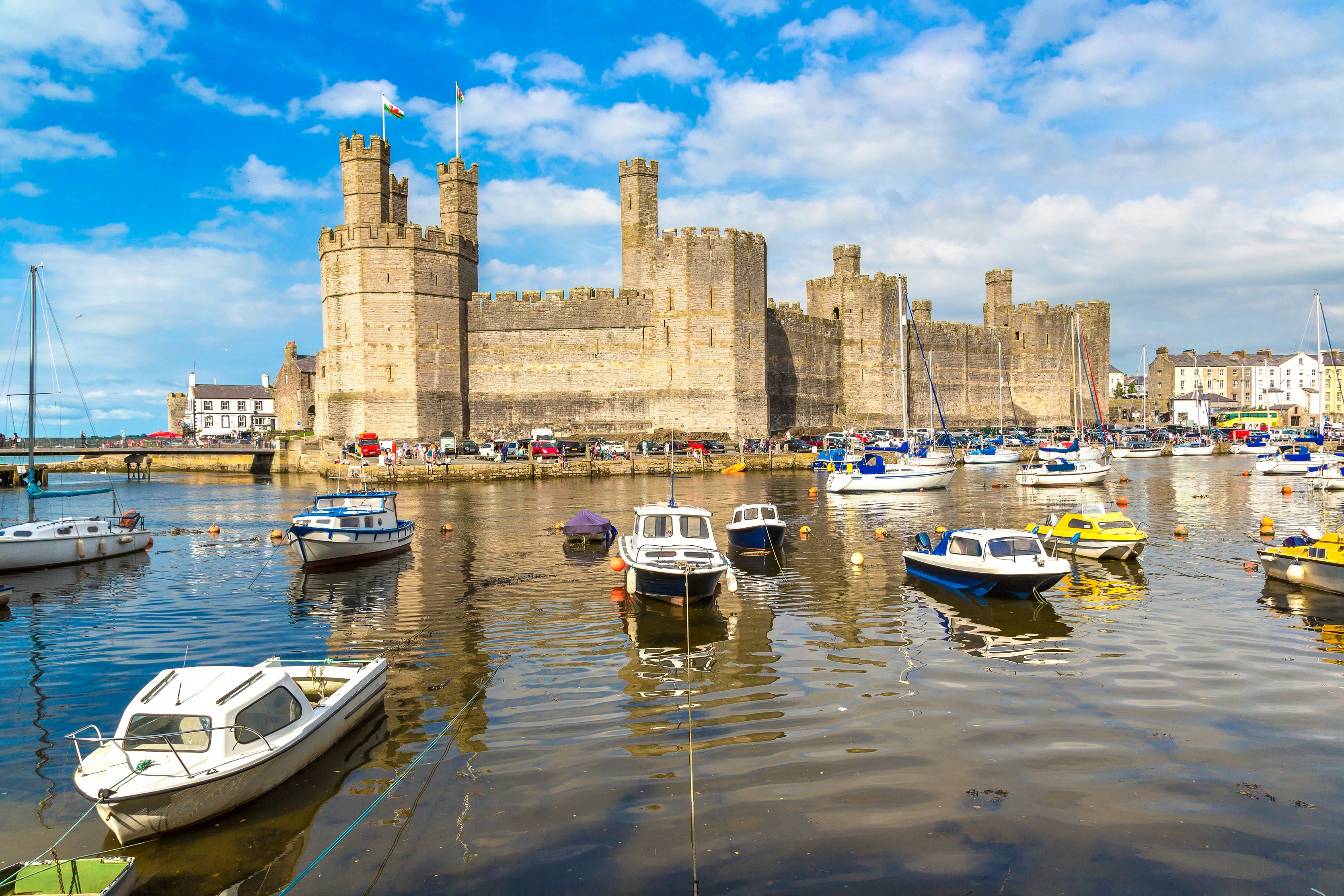
Day 5: Take a trip across Anglesey
Go to Holyhead: Use day five to explore Anglesey – Wales’ largest island – crossing the Menai Strait on Thomas Telford’s suspension bridge, a Welsh landmark since 1826.
How to spend the day: Start off with a circuit around Caernarfon Castle. Towering over the Menai Strait, its concentric rings of thick curtain walls and polygonal towers were designed to convey a simple message to rebellious Welsh princes: look out, the English are here! A masterpiece of medieval military design, it was built by castle-mad Edward I, drawing inspiration from imperial Roman architecture.
When you’re ready, cross to Anglesey on the Menai Suspension Bridge to reach Beaumaris, dotted with houses in a pleasing hotch-potch of architectural styles. The shoreline is lined with colorful buildings, and the town pier serves as a popular local crabbing spot.
Central to the town is Beaumaris Castle, a 13th-century stone masterpiece with near-perfect symmetry. The much-resented Edward I built this royal beauty as part of his ambitious “iron ring” of castles to assert his dominance over the rulers of Wales.

Board a boat tour with Seacoast Safaris at the pier to zip past Trwyn Penmon Point to Puffin Island (Ynys Seiriol), home to kittiwakes, guillemots, razorbills and puffins between April and mid-July. You can also see lolling gray seals year-round, and the craggy island has monastery ruins and views towards the distinctive black-and-white Trwyn Du Lighthouse.
You can loop round to the north side of Trwyn Penmon Point for a stroll along the broad, wave-lapped sands of Llanddona Beach, before heading southwest to reach Plas Newydd House & Gardens, whose sprawling gardens are a great spot to see endangered red squirrels.
Finally, head across Anglesey on the A55 to reach Holyhead, where you should have time to drop into the South Stack Cliffs RSPB Reserve. In this wild expanse of craggy cliffs, up to 9000 seabirds nest from May to June, including guillemots, razorbills and puffins.
A steep, serpentine flight of steps leads down to the wonderfully atmospheric South Stack Lighthouse – an engineering marvel from 1809 – for tremendous views over the cliffs and across open water to Ireland. It’s a fitting endpoint for a thrill-packed drive across North Wales.
Evening: Close out your trip on the seafront in Holyhead, where the Harbourfront Bistro serves up globe-trotting plates and sea views, then wander along the prom to Langdons Restaurant & Bar for a pint of Wrexham lager on draught, closing the circle.
This article was adapted from Lonely Planet’s Wales guidebook, published in June 2025.







